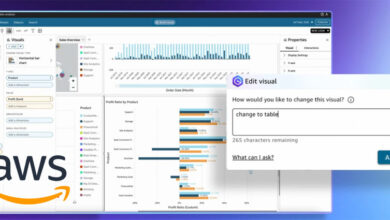Amazon’s Project P.I. uses generative AI to scan packages for defective products

Amazon.com Inc. today revealed one of the more practical ways in which it’s putting generative artificial intelligence technology to use. The company explained that Project P.I. is an AI-powered system that combines generative AI with computer vision to reduce the number of products with defects that are shipped out of its fulfillment centers.
Project P.I. works by scanning each product as it passes through an imaging tunnel, using advanced algorithms to detect problems such as damaged packaging, incorrect colors or sizes and expired items.
Whenever a defect is found, that product will be blocked by the system, so it isn’t shipped out to the customer. Amazon’s teams will then review the flagged item to ensure it really is defective, and then decide what to do with it, such as discounting it for resale on the Second Chance platform, donating it, or finding another use for it.
Project P.I, which stands for “private investigator”. is up and running in a number of Amazon’s fulfillment centers already, and the company explained that it scans millions of products that pass through its imaging tunnels on a daily basis. As each item moves through the tunnel, the system scans it for defects in various ways. For example, an optical character recognition model will check the product expiration dates to ensure no expired products are sent out to customers. Computer vision models, trained on reference images from Amazon’s product catalogs and others that were sent to customers, will analyze the color to ensure it’s what the customer requested. Any visible physical damage to the item will also be picked up, such as a bent book cover or torn packaging.
By catching defective products before they’re shipped out, Amazon says it’s improving the customer experience while also boosting its sustainability efforts by reducing the number of product returns, which increase carbon emissions and waste packaging.
According to Dharmesh Mehta, vice president of Worldwide Selling Partner Services at Amazon, it’s important to get the experience right for customers every time they shop. As such, the technology is a win for Amazon’s customers, selling partners and the environment, he said.
The Project P.I. system can also assist Amazon in investigating the root cause of negative customer experiences. When products are returned, Amazon uses a Multi-Modal LLM system to review the customer’s feedback and analyze the images taken by Project P.I. and its fulfillment centers, to confirm what caused the problem. Project P.I. will then learn from its mistakes, while Amazon’s selling partners can also access the data on defective products in order to prevent future errors of that kind.
Amazon said it’s planning to expand Project P.I. to additional fulfillment centers throughout the rest of the year as part of its focus on continuously improving its operations and sustainability efforts.
The initiative represents just the latest AI tool used by Amazon in its bid to become more sustainable. For several years, it has used AI models that scan products to reduce packaging use, monitor the quality of products in its grocery service, and estimate each product’s carbon footprint.
Moreover, the company’s cloud computing services arm, Amazon Web Services Inc., has emerged as a key platform for AI developers, offering access to models from companies such as OpenAI, plus tools for building AI-powered applications.
Image: Amazon.com
Your vote of support is important to us and it helps us keep the content FREE.
One click below supports our mission to provide free, deep, and relevant content.
Join our community on YouTube
Join the community that includes more than 15,000 #CubeAlumni experts, including Amazon.com CEO Andy Jassy, Dell Technologies founder and CEO Michael Dell, Intel CEO Pat Gelsinger, and many more luminaries and experts.
THANK YOU



